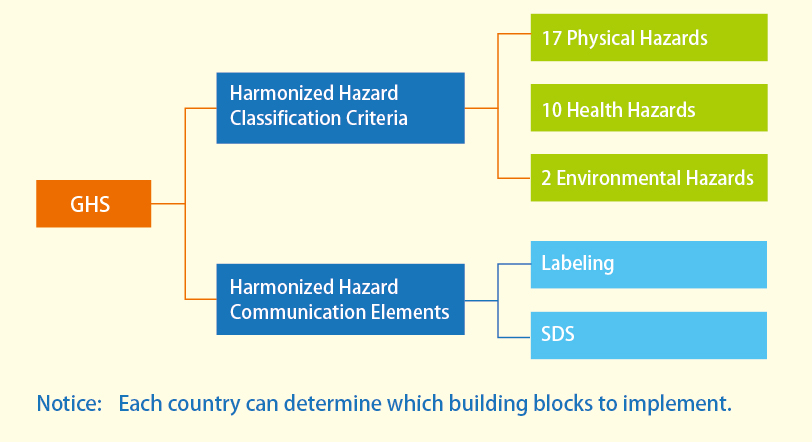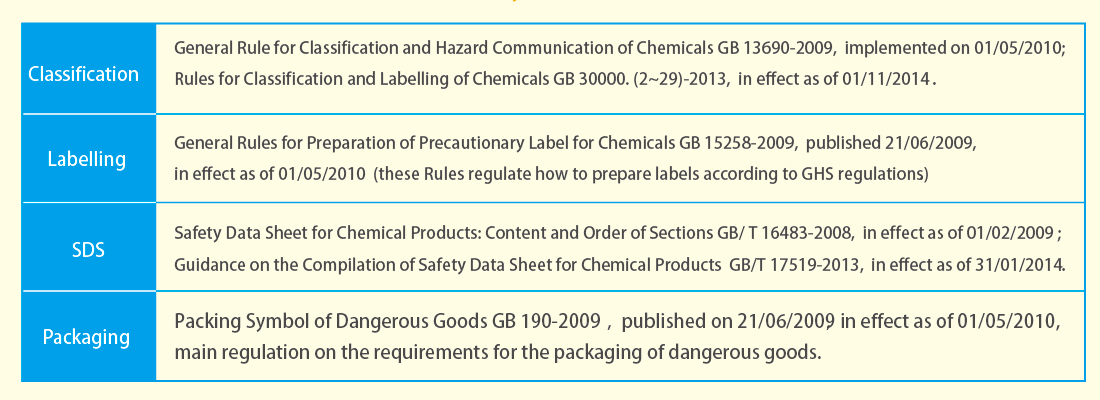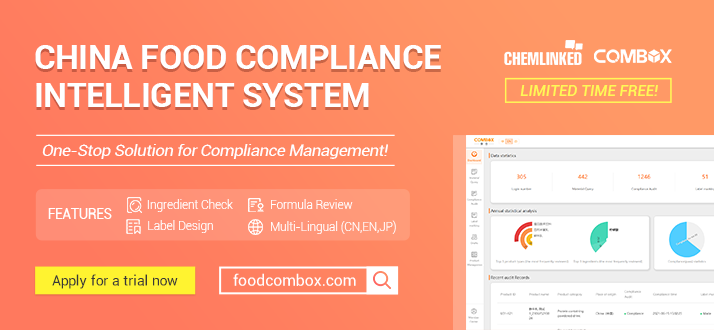China GHS
GHS Overview
The Globally Harmonized System of Classification and Labelling of Chemicals (GHS) (“Purple Book”) is a guidance document published in 2003 by the United Nations (also referred to as the UN GHS). An updated edition of the GHS is published by the United Nations every two years (as of publication of this brochure, 2017 is the 7th and most recent revised edition). The 2002 United Nations World Summit on Sustainable Development (WSSD) encouraged countries to implement GHS before 2008. In order to ensure consistency with UN GHS, individual countries have gradually enacted corresponding implementation regulations, among them the European Union’s (EU) release of its Classification, Labelling and Packaging (CLP) Regulation in 2008, followed by China’s implementation of GHS in 2011, and the United States modified Hazard Communication Standard (HCS) in 2012.
GHS Outline

EU CLP: an overview
With links to the UN GHS and the REACH legislation, on January 20, 2009 the EU introduced the Classification, Labeling and Packaging of Substances and Mixtures (CLP) Regulation (EC) No. 1272/2008. CLP was fully implemented for chemical substances on December 1, 2010, and mixtures on June 1, 2015.
Which substances are affected by EU CLP?
The vast majority of substances and mixtures imported into Europe must comply with EU CLP regulations, regardless of the tonnage.
- All substances which must be registered under EU REACH must also comply with EU CLP;
- Less than 1 ton/year of hazardous substances and mixtures of raw materials;
- Hazardous polymers, pesticides, etc.
- Reclassify products
- Update product labels and packaging
- Update SDS
- CLP Notification
Comparative Analysis of EU, US and China GHS

What Substances Should Comply With China GHS
- Chemicals listed in the Catalog of Hazardous Chemicals 2015.
- Chemicals classified as hazardous chemicals following hazard identification.
- Chemicals with data identifying them as hazardous in accordance with 28 international chemical classifications.
Corporate Obligations under GHS
Following the implementation of China GHS, some of the obligations companies must comply with are:

Our Services
- UN GHS/EU CLP/US GHS/China GHS training system;
- Update of product classifications & design of SDS, labels and packaging in line with UN GHS/ EU CLP/ US GHS/ China GHS requirements;
- SDS/MSDS/Labels in English, German, French or other languages and formats, including html, .doc, etc.;
- SDS/Label Verification;
- Preparation and Submission of C&L notification in line with CLP Regulation ;
- Production of SDS/MSDS/Labels that comply with standards in countries implementing GHS regulations(Japan, Thailand, Malaysia, Indonesia , ASEAN).
Why REACH24H?
- High level professionals, one of the first technical teams in regulatory research, providing strong technical support backed by many years of experience in global GHS regulatory research and technical consulting, offering first level technical services;
- As of 2018, we have experience in over 35,000 SDS/labelling;
- Long- term communication channels with government officials and experts to ensure service quality and efficiency;
- Staff with English, Korean, Japanese and other language skills providing efficient services to our international clients and partners to ensure one-stop shop compliance services.




